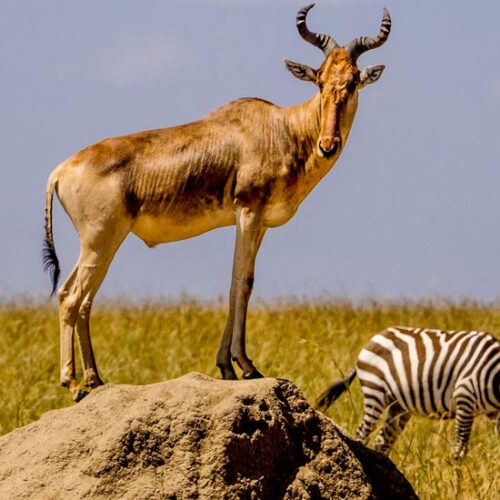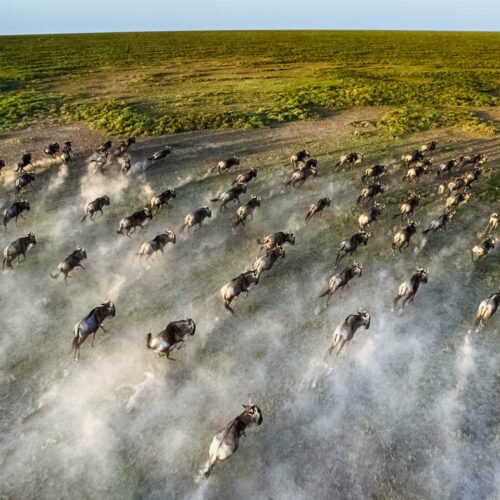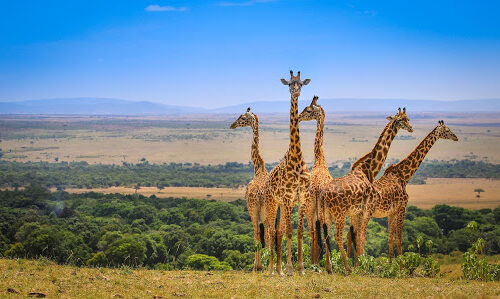
Home of The Great Migration
With 1520 square kilometers of pristine Africa wilderness, the reserve is world famous for its vast assemblage of plains’ game together with their assorted predators. It is perhaps the only area remaining in Kenya where one may see wildlife in the same super abundance as existed years ago, or for that matter, to witness one of the wonders of the world-the annual migration of million of wildebeest and zebra. It provides breath-taking vistas, a panorama of vast rolling plains and hills of groves of acacia woodlands and thickets of scrub. Also present are the largest population of lions to be found in Kenya, as well as huge herds of Topi and the rare Roan antelope not seen elsewhere into his country. The area is bisected by the Mara River which every now and then comes into tumultuous flood, and which is boarded by a section of luxurious riverine forest. Hippo laze in its waters, while drowsy looking crocodiles sunbathe on the banks, mouths agape. Despite the marvels of the annual migration, the Mara is rich in resident wildlife and avifauna. The bird life being profuse with over 400 species readily identified.


